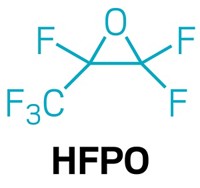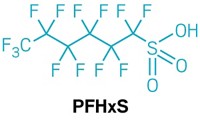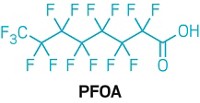Advertisement
Grab your lab coat. Let's get started
Welcome!
Welcome!
Create an account below to get 6 C&EN articles per month, receive newsletters and more - all free.
It seems this is your first time logging in online. Please enter the following information to continue.
As an ACS member you automatically get access to this site. All we need is few more details to create your reading experience.
Not you? Sign in with a different account.
Not you? Sign in with a different account.
ERROR 1
ERROR 1
ERROR 2
ERROR 2
ERROR 2
ERROR 2
ERROR 2
Password and Confirm password must match.
If you have an ACS member number, please enter it here so we can link this account to your membership. (optional)
ERROR 2
ACS values your privacy. By submitting your information, you are gaining access to C&EN and subscribing to our weekly newsletter. We use the information you provide to make your reading experience better, and we will never sell your data to third party members.
Persistent Pollutants
New PFAS health risk levels cement gap between US federal agencies
by Jyllian Kemsley
May 15, 2021
| A version of this story appeared in
Volume 99, Issue 18

A division of the US Department of Health and Human Services has finalized health risk levels for four per- and polyfluoroalkyl substances (PFAS). PFAS are valuable as manufacturing aids and in consumer products for properties such as resistance to heat, stains, and water. But those properties also mean that they are environmentally persistent, and several have been linked to cancer and other health problems. The Agency for Toxic Substances and Disease Registry (ATSDR) says the minimal risk level for perfluorooctanoic acid (PFOA) is 3 × 10–6 mg per kilogram of body weight per day, while the level for perfluorooctanesulfonic acid (PFOS) is 2 × 10–6 mg per kilogram of body weight per day. Those levels are an order of magnitude lower than the Environmental Protection Agency’s advisory safe daily dose levels. For two other substances evaluated by the ATSDR, perfluorohexanesulfonic acid (PFHxS) and perfluorononanoic acid (PFNA), the EPA does not have safe daily dose levels. The ATSDR report has been in the works since 2009 and adheres to draft levels released in 2018. The EPA is working on setting enforceable regulatory limits for PFOA and PFOS in drinking water.





Join the conversation
Contact the reporter
Submit a Letter to the Editor for publication
Engage with us on Twitter